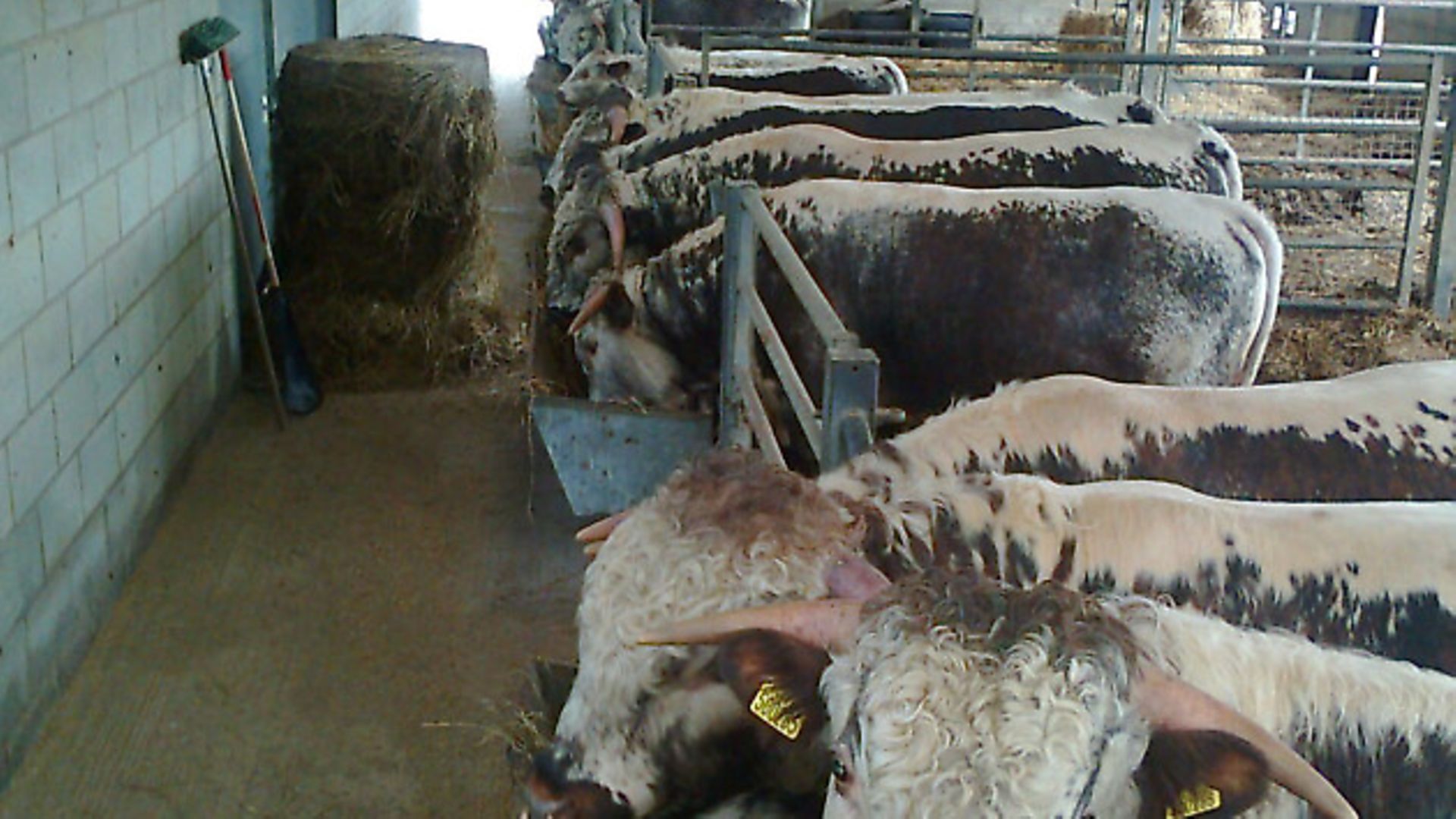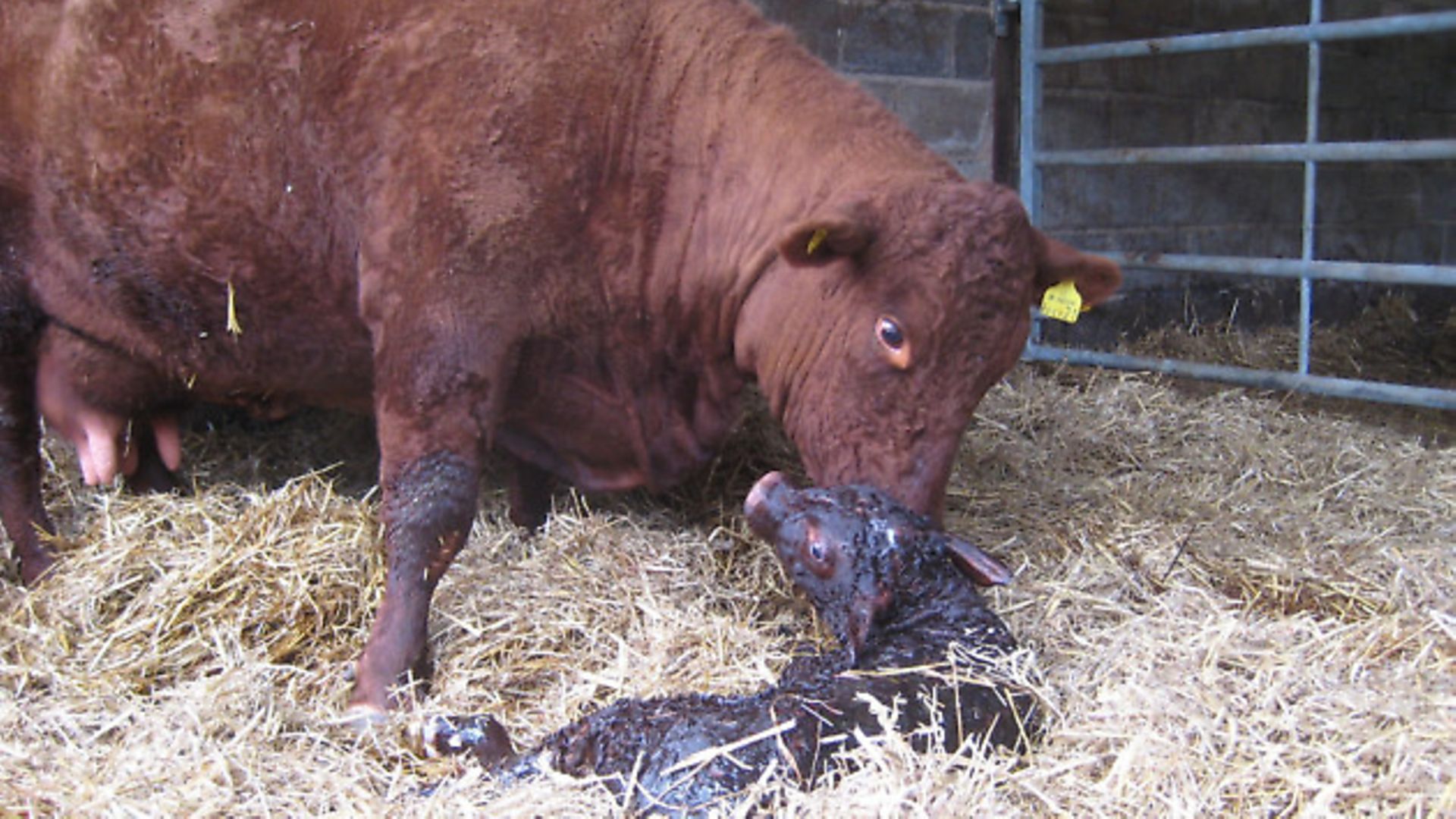In the third part of our series on cattle, Debbie Kingsley looks at overwintering your cows and housing requirements

Probably the most common question asked on our Cattle for Beginners course is ‘Why do you keep cows inside?’. Explaining that we are on heavy Devon clay means little to the inexperienced, so we take them to a field that the herd has walked through just the once to come into the barns for the winter and it all suddenly becomes clear. When it starts to rain regularly, in November if you’re lucky, or October if you’re not, the ground becomes saturated and a 700 kilo cow only has to prance joyfully for a few moments to leave a pattern of deep hoof marks. This poaching of the ground would turn fields into a quagmire in a very few days, damaging the soil structure, creating pits for more water to collect and ruining the grass. So it’s not for the sake of the cows that we overwinter them for around five months of the year, but for the sake of the ground. Cows are hardy creatures and if you plan to keep them on nice, hard, well-drained ground, you can laugh in the face of this article and move swiftly on. For many of us, however, if we are to avoid compromising our land and ensure a growth of sweet sward for spring grazing, we have to take a deep breath and provide housing for our cows.
I’d been fortunate in having spent time with a very good friend and neighbour who had kept cattle for 30 years. I’d seen how immaculate and clean she kept her cows, and took careful note of the layout of her magnificent ‘cow palace’ and was able to translate that large system into something smaller at home.
We were lucky – our farm had several small barns that had been used to house cattle of various ages, but not one was entirely suitable and all were in desperate need of improvement if we were to end the winter with healthy cattle. The largest barn had inadequate ventilation, an earth floor, a single tiny water trough, no internal gates and breeze block walls restricting the width of the gateways. It also had a concrete manger (a built in trough for hard feed) and hay rack running the whole length of the barn. It was the manger and rack that we had most conversations about. These days new cow barns are built with simple feed barriers that cows poke their heads through and chomp on forage at ground level; this makes it very easy to distribute their feed. However, our mangers and racks were massively built and we decided to leave them in place and see how we fared, lifting hay and haylage manually into the racks morning and evening.
What we couldn’t live with were all the other inadequacies. We concreted half of the shed so that the cows would feed on hard standing. This is where they also tend to muck, so mucking out would be easier. The concrete floor is wide enough to drive a tractor down it if we want to scrape out, although we have stuck with big wheelbarrows and muck forks, only using the tractor to muck out at the end of the winter. In the other half of the shed, where the cows lie on deep straw beds, we kept the existing tamped earth and lime surface as the urine drains down and doesn’t pool as it would on concrete. We put up Yorkshire boarding (vertical wooden cladding with gaps between each board) to improve ventilation, and removed the single water trough and put in three along the manger.
But the biggest investment was the gates. After more than 20 years of keeping livestock, these would be our very first cows and we were understandably a little nervous of such big creatures. We wanted a system that enabled us to move the cows where we wanted them, to segregate areas (for calving or treatment or to stop any bullying), and most importantly to keep ourselves and the cows safe. We also wanted to be able to push all the cows back onto their bedding area each morning and shut them there securely so that we could open the external gates and muck out easily. So we bought heavy–duty cattle gates with metal posts dropped into sockets, so that everything can be removed for cleaning. New gutters and downpipes and improved drains were also sorted. Apart from helping hands from friends to lay the concrete, we did everything ourselves.
The first winter in the cow shed was wonderful. It gave us a chance to get really hands on and to know the cows well. Andrew and I alternated the daily mucking out and continue to do so; it took about 45 minutes or much longer if I sang or chatted to the cows. During that first winter I worked out that we should have about six cows plus followers to make it work economically, so the next year it was time to buy more and our foundation herd was complete – from now on we’d breed all our own. However, cowshed #1 was no longer big enough if I wanted them to have plenty of space…so we converted another barn. Our confidence having grown, we didn’t need such ambitious internal gating, but we still split the shed into three gated areas. We changed the barred external gates for sheeted ones to keep out the worst of the weather and left the floor as tamped lime. This barn was rather dark and damp, so the following summer we upgraded it. We learned that having cows eat while standing on an earth floor is not good for their feet – the cows that had wintered in cowshed #2 had much longer and more curved feet than those on concrete in shed #1 by the end of the winter. The summer upgrade was quite substantial: as with the first shed we concreted the half of the floor; we took off the roof and replaced the holey tin with cement fibre board – a revelation that stopped all condensation and drips – interspersed with clear plastic corrugated skylights that let in much needed light. We took down the tin upper walls, replaced it with Yorkshire board and created a gap along the length of the building to create an updraft to improve ventilation. Guttering and drainage were the final improvements.
We also needed to create a corral so that the cows in the new shed could be shunted into the race and crush adjacent to cowshed #1 when necessary without disappearing across the farm.
The handling system

It makes sense to integrate your cattle handling system, however simple, with your housing, so that annual husbandry tasks can be carried out easily over the winter when the cows are at hand. The cows get their annual foot trimming soon after housing, and have a dose of flukicide after they have been inside for two weeks. Calves can be vaccinated, and cows and heifers can be artificially inseminated if not yet in calf. We also clip the hair off the backs of all cows and calves as soon as they come in. This creates a lot of interest from our course participants, who may have seen horses clipped, but never a cow. In fact, clipping housed cattle has been carried out for generations. Trimming off the heavy winter coat along the spine, creating a nice wide dorsal strip, stops the cows getting sweaty, and a sweaty coat that cools will chill an animal and contribute to the possibilities of pneumonia. Trimming is a cheap, easy, non-invasive, respiratory illness prevention measure.
Next month…
getting your cows in calf without a bull.
Go on a course:
Debbie and Andrew run a Cattle for Beginners course on their beautiful Devon farm.
See www.smallholdertraining.co.uk/cattle.html
call 01837 810569 or email debbie@smallholdertraining.co.uk
Image(s) provided by:
Archant
Archant







